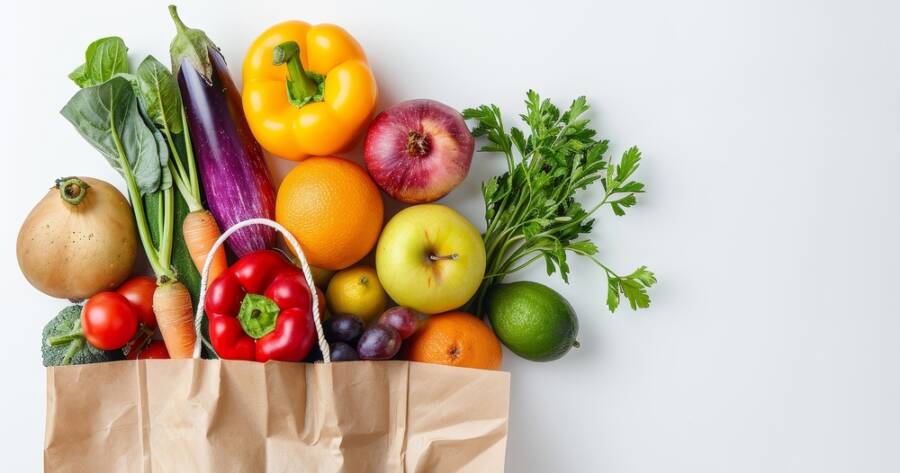In today’s world, the rising cost of living can leave many families struggling to stretch their budgets. Grocery bills are a significant part of monthly expenses, but there are ways to manage them intelligently and effectively. Techniques such as strategic planning, being mindful of sales, and adopting creative cooking habits might help in spending less while still enjoying delicious, healthy meals. Exploring various methods to save on groceries could reveal new opportunities for feeding your family for less.
Plan Ahead with Careful Meal Planning
Planning meals in advance could be one of the most effective ways to save money. By taking time to map out weekly menus, families may avoid impulsive purchases and reduce waste. Keeping a well-organized list can help ensure buying only necessary items.
Using leftovers creatively might transform them into new dishes, potentially ensuring the best use of each ingredient. Sticking to a plan as closely as possible could prevent unnecessary expenses.
Embrace Store Brands and Bulk Buying
Generic or store-brand products could be equally nutritious and flavorful as their branded counterparts, often at a fraction of the cost. Families might experiment by swapping some preferred brands with store versions to see if there are significant differences.
Purchasing in bulk can also lead to savings, especially when considering non-perishable items or pantry staples. Bulk buying requires careful planning, as it’s essential to ensure storage availability and to avoid spoilage.
Look for Sales and Discounts
Attuning shopping habits to coincide with sales and discounts can create substantial savings. Many supermarkets rotate discounts and special offers, which provides opportunities to buy favorite items at lower prices.
It may be beneficial to sign up for store loyalty programs, as they often offer additional discounts or points that can add up over time. Being flexible about brands and types of food can make it easier to take advantage of bargains.
Grow Your Own Produce
If space permits, starting a small garden or even a few herb pots on a windowsill might be a way to reduce vegetable and herb expenses. Whether it’s a full garden or a few kitchen plants, growing produce can be rewarding, both financially and personally.
Fresh herbs, tomatoes, and lettuce are examples of what could be grown with minimal effort and expense. Home-grown produce can offer superior freshness and control over chemical exposure.
Shop Seasonally and Locally
Buying seasonal produce might lead to accessing fresher and less expensive options since items in season are usually abundantly available. Visiting local farmers’ markets could provide exposure to fresh, local produce, often at competitive prices. Understanding which foods are in season and tailoring meals around them can not only be cost-effective but also improve the quality and taste of meals.
Mindful Eating and Portion Control
Careful consideration of portion sizes has the potential to conserve food and reduce costs. By serving appropriate portions and avoiding wasteful habits, families might find that food lasts longer.
Teaching children to appreciate food and consume responsibly could lead to lifelong savings and healthier attitudes towards eating. Mindful eating practices consider the quality and quantity of food, which may significantly impact household budgets.
Experiment with Meatless Meals
Incorporating more plant-based meals into the weekly menu could lower grocery bills while expanding culinary enjoyment. Meat is often one of the most expensive items in a shopping cart, so substituting with beans, lentils, or tofu occasionally may lead to savings. Flexibility with recipes and willingness to try new ingredients might introduce exciting flavors while also benefiting the budget.
Reduce, Reuse, and Repurpose
Awareness of food usage can translate into saving money and reducing environmental impact. Repurposing leftovers into entirely new meals can be a creative and cost-effective way to use every ingredient.
Simple steps like freezing surplus food, utilizing vegetable scraps for stocks, or creatively using stale bread can transform potential waste into practical resources. These practices may not only reduce waste but also opens ways to save consistently.
Learn More Today!
Saving on groceries requires a blend of careful planning, flexibility, and creativity. By embracing diverse strategies from meal planning and bulk buying to gardening and mindful eating, families might find opportunities to cut costs without sacrificing quality or enjoyment.
Encouraging these practices could lead to more efficient shopping experiences and mindful consumption. With thoughtful adaptation and strategic efforts, families could discover sustainable methods to manage grocery expenses effectively.

